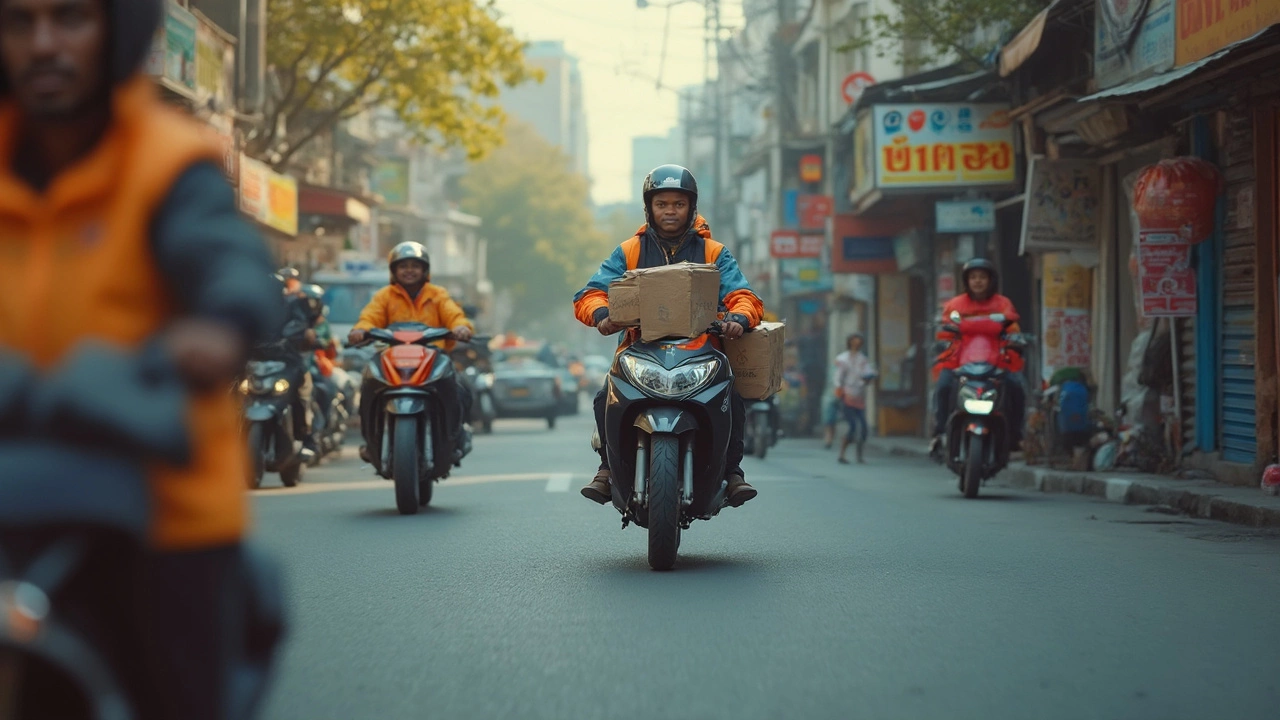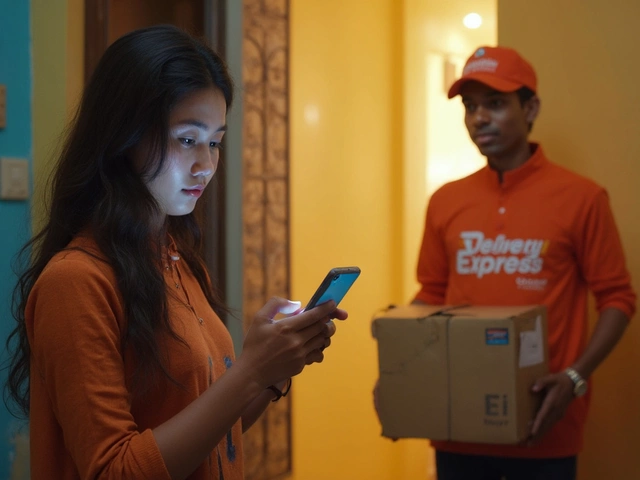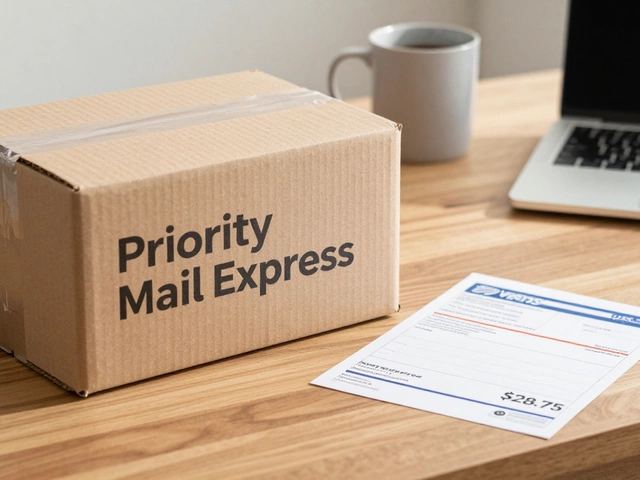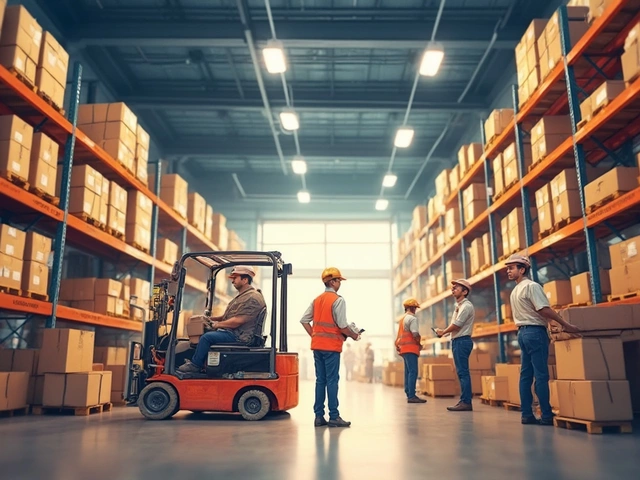Picture this: You order new headphones online at 10 a.m., and by 4 p.m., they're at your door. It's not magic—it's last mile delivery as a service, known as LMaaS if you're into acronyms. This setup lets retailers and brands tap into specialized companies that handle the final, crucial stretch of getting your package from a local hub straight to you, fast and more reliably than ever.
Last mile delivery usually chews up more than half of the entire shipping cost. That's a big deal for businesses trying to keep customers happy without blowing the budget. With rising pressure for same-day and next-day shipping, companies can't afford to mess this up. That's where last mile delivery as a service steps in—think of it like hitching a ride on Uber, but for your packages.
It's not just for giant companies either. Smaller stores and local brands can plug right into these services, leveling the playing field without needing their own fleets of vans and drivers. Companies like AxleHire, Dispatch, and even gig-driven options help make this possible, letting almost anyone deliver like Amazon. If your package turned up within hours, chances are, LMaaS worked its magic somewhere along the way.
- Understanding Last Mile Delivery as a Service
- How the Model Works Behind the Scenes
- Benefits for Businesses and Customers
- Tackling Challenges and Keeping Costs Down
- Tips for Choosing the Right Service Partner
Understanding Last Mile Delivery as a Service
So, what's the big deal about last mile delivery as a service? This model means businesses don't have to own vans or set up delivery teams to make sure your online shopping lands at your doorstep quickly. Instead, they pay third-party companies to handle the stretch between the warehouse or fulfillment center and your front door—that's the "last mile."
The last mile is actually the trickiest, slowest, and most expensive link in the shipping chain. Studies from 2024 show that over 53% of delivery costs come from this final step alone. This isn’t just a headache for retailers; customers notice delays right away, and one slow delivery can send shoppers looking elsewhere next time.
Here’s how it works in a nutshell: businesses connect to platforms run by delivery specialists. These platforms use a mix of tech, route planning, and sometimes even gig workers with their own cars, all to get parcels delivered faster, for less money, and with real tracking. You can think of this process as joining a delivery network, not building one yourself.
- Retailers and e-commerce shops hand off orders at a local hub.
- The delivery service matches each order with the nearest available driver.
- Packages are tracked live so businesses and customers can check progress in real time.
- If a customer isn’t home, services can send updates or try again later, instead of just leaving a slip.
Here’s a quick look at numbers that show why last mile delivery has become such a hot business:
| Fact | Data (2024) |
|---|---|
| Average last mile cost (as % of total shipping) | 53% |
| Average delivery time (urban areas, partnered services) | 6 hours |
| Percent of customers expecting real-time tracking | 82% |
| Growth of LMaaS market per year | Over 8% |
The point is, nobody wants to wait around for packages. LMaaS lets both huge brands and small shops offer fast, trackable delivery without massive up-front costs. That's a game-changer, especially now that shoppers expect speedy service no matter where they buy from.
How the Model Works Behind the Scenes
When you click “place order,” a lot starts happening that you never see. Last mile delivery as a service jumps into action as soon as your order hits the retailer’s system. Instead of sending one company van to every house, your package joins a bigger pool—think of dozens of orders coming from stores, local warehouses, or even restaurants, all getting sorted and routed in real time.
These LMaaS platforms use smart algorithms to figure out the quickest, cheapest delivery routes. They factor in things like traffic, driver schedules, and package size. Big names like Dispatch and Roadie tap into hundreds or even thousands of part-time drivers, matching your delivery to someone already close by or heading your way. This makes it way more efficient than the old model of a truck driving all over town for just a handful of stops.
| Step | What Happens |
|---|---|
| Order Received | The retailer gets the order and requests pick-up from the LMaaS platform. |
| Batching & Routing | Packages from many brands are batched and assigned optimized routes using software. |
| Driver Assignment | Nearby drivers (sometimes gig workers) get matched in real time. |
| Local Pickup | Driver picks up multiple packages from the hub or local store. |
| Real-Time Updates | Both store and customer get live tracking and delivery alerts. |
| Final Drop-Off | Driver delivers to your door, sometimes snapping a photo for proof. |
This isn’t just a “drop and run” kind of gig. Most platforms offer live tracking, easy communication, and proof-of-delivery photos. If you need to reschedule or leave delivery notes, you can do all that through the app or website. Even failed deliveries get rerouted automatically to save time and money, both for businesses and customers.
Speed and efficiency are big selling points. According to Shippo’s 2024 e-commerce report, 62% of consumers now expect next-day delivery as a standard. Platforms offering last mile delivery as a service are what make this possible, especially for smaller shops that couldn't keep up otherwise. The end goal? Get your stuff to you faster, keep costs down, and make sure both the business and you are happy with the process.
Bottom line: the secret sauce is smart software, a flexible driver network, and real-time data. That’s how last mile delivery as a service connects your clicks to your front door—without missing a beat.

Benefits for Businesses and Customers
Using last mile delivery as a service gives businesses of all sizes the edge. For starters, companies save a ton because there's no need to run their own delivery fleet or hire extra drivers. This service lets shops scale up for busy times—like holiday shopping sprees—without getting stuck with high fixed costs. With demand going up and down all year, businesses want flexibility, not more permanent expenses.
Customers get what they really want: quick, reliable delivery. A Deloitte 2024 survey found that 85% of online shoppers are more likely to choose a store with same-day or next-day shipping. With higher expectations, slow shipping just doesn't cut it anymore. LMaaS providers make it way easier to meet these promises, often using real-time tracking so customers know exactly where their order is.
- Lower shipping costs for retailers by reducing wasted fuel, time, and resources.
- Simplifies logistics, letting shops focus on selling instead of managing deliveries.
- Drives up customer loyalty, since fast delivery keeps people coming back.
- Enables smaller brands to compete with big players without big budgets.
Here's a look at the numbers. Check out how LMaaS stacks up for both businesses and shoppers:
| Benefit | Impact |
|---|---|
| Cost Savings | Companies save up to 30% compared to running their own delivery system* |
| Faster Deliveries | Over 60% of LMaaS orders reach customers same-day or next-day* |
| Customer Satisfaction | Satisfaction rates climb 12% with real-time tracking and fast shipping* |
| Order Volume | Businesses using last mile delivery as a service report up to 22% more repeat orders* |
*Based on industry data from 2023-2024 reports by McKinsey and logistics market analysis.
If you're looking for ways to keep your customers happy and your costs down, figuring out how to tap into LMaaS should be near the top of your list.
Tackling Challenges and Keeping Costs Down
The final stretch of delivery brings a whole bunch of headaches and unexpected expenses. Companies have to wrestle with unpredictable traffic, wrong addresses, failed deliveries, and customers who want real-time updates. Each hiccup can chip away at profits, and for some, the numbers hurt. Experts have found that last mile delivery eats up about 53% of the total shipping costs — that's more than half your budget for getting something to a doorstep.
One stubborn issue is failed deliveries, which hit e-commerce especially hard. Not only does a failed drop-off mean a wasted trip, but it can also bring re-delivery fees, lost sales, and unhappy buyers. To tackle this, top services use customer texting, GPS tracking, and flexible delivery windows. Sending a “your driver is a few stops away” message can cut missed deliveries by up to 25% according to real-world data from Dispatch.
Route optimization is a game-changer too. Smart algorithms crunch address lists, current traffic, and delivery time windows, squeezing as many successful stops in as possible. Here’s how some popular cost-savers stack up:
| Cost-Cutting Strategy | Typical Savings |
|---|---|
| Route Optimization | Up to 20% lower fuel use |
| Real-Time Tracking | Reduces failed deliveries by 15-25% |
| Gig Worker Fleets | Lower labor costs during demand spikes |
| Delivery Lockers/Pickup Points | 40% fewer home delivery failures |
Packing vehicles smarter is another favorite trick, especially for urban drops. Instead of filling up half-empty vans, some companies use smaller vehicles or e-bikes and schedule multiple mini-runs throughout the day. This keeps vehicles full, saves fuel, and fits city life a lot better.
To keep costs low in last mile delivery, don’t just stick with one solution. Mixing and matching — like combining lockers, gig workers, and smart tech — usually gives the best results. If your deliveries go haywire, start by checking for bad data, old routes, or clunky tracking tools. Even tiny upgrades in these spots make a big impact without breaking the bank.
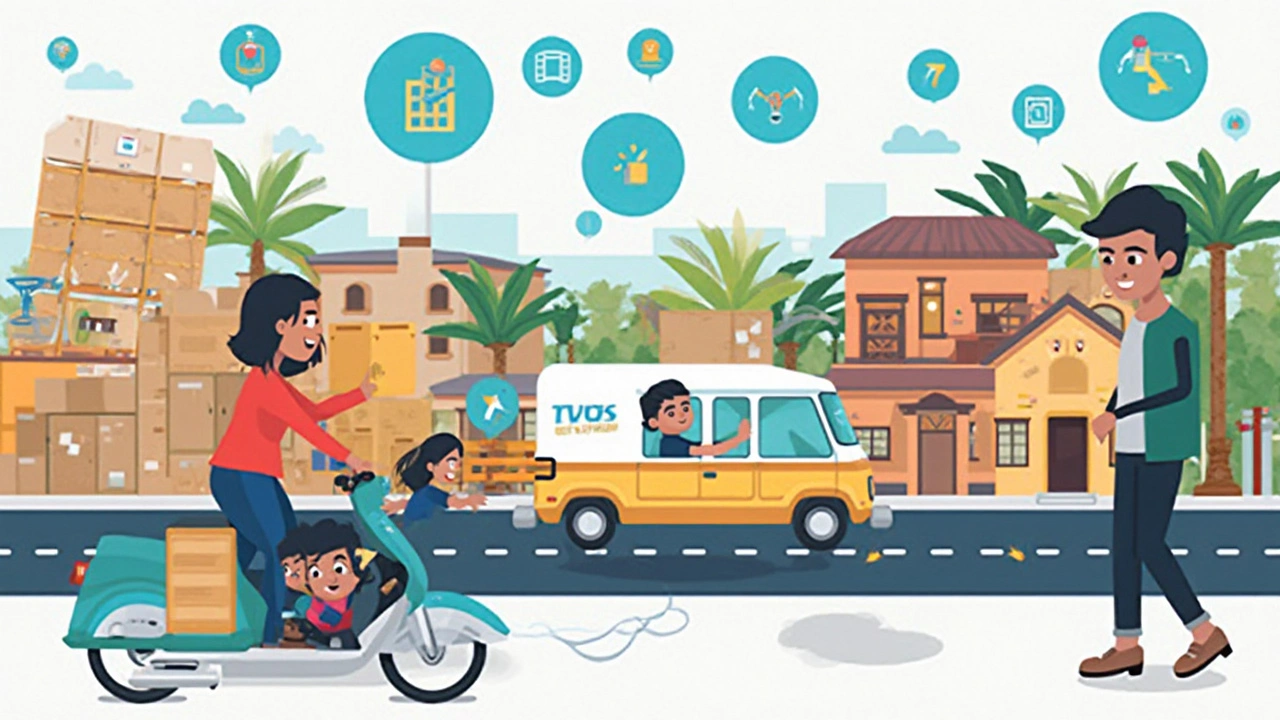
Tips for Choosing the Right Service Partner
Picking the right last mile delivery as a service partner can make or break your shipping game. If you want to keep customers happy and avoid headaches, it pays to do some homework.
First, always check the partner’s actual delivery coverage in your area. Some companies look national on paper but outsource to random local teams in small cities, which can mess with reliability. Ask for real data: On-time delivery rates, average delivery times, and how they handle peak periods. It’s fair to request references or case studies from businesses similar to yours.
The technology piece matters too. Does your potential partner offer real-time tracking, automated notifications, and easy-to-use dashboards? Giant players like AxleHire and Dispatch offer these features. They make a huge difference—customers hate not knowing where their package is. A modern API that plugs straight into your store’s checkout can also save loads of manual work and sync up customer updates effortlessly.
Next, look at pricing. Some services charge a flat rate, others go by package weight, distance, or even surge pricing during rush hours. Understand the fees upfront so you’re not surprised later. Don’t forget the small print—sometimes cancellation or failed delivery fees can creep up on you.
Customer support is another dealbreaker. If something goes wrong, you’ll want quick answers, not an endless hold queue or a generic chatbot. Test their support channels before fully signing up.
Here’s a quick checklist:
- Last mile delivery coverage and proven reliability
- Real-time tracking and transparent communication tools
- Fair, clear pricing with no hidden fees
- Seamless tech integration options
- Responsive, real human support
One more tip: start small. Do a pilot run with a few shipments before making a big commitment. This way, you’ll know if the service truly matches your needs without risking your whole operation.
